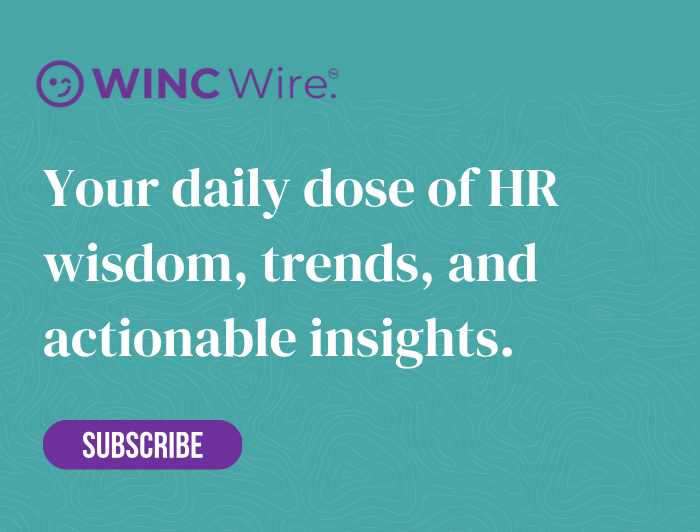In this business climate, adaptability isn’t just a nice-to-have; it’s become the very foundation of resilience. We often talk about an agile organisation being like a finely tuned engine, but what does that really mean when we’re the ones responsible for the people who make it run?
The Business Agility Institute puts it rather well, suggesting agility is the point where our behaviours, capabilities and ways of working meet to give a business the freedom to deliver on its purpose, regardless of what the future throws at it.
This conversation is no longer confined to the tech and project management teams. We, as HR leaders, are now right in the middle of it. It’s become clear that the people function must evolve just as quickly as the business around it. The traditional HR model, so often defined by rigid policies and processes, is making way for something far more dynamic; a model built on adaptability, genuine collaboration, and human-centred design.
Redefining the Role: What Do We Actually Mean by ‘Agile HR’?
Let’s be clear: Agile HR isn’t about applying a few tweaks to the old playbook. It’s a complete reinvention. It’s the difference between a rigid, top-down hierarchy and a responsive, people-first ecosystem. That, right there, is the heart of it.
Drawing its principles from agile methodology, this approach systematically dismantles the silos and static rulebooks of legacy HR. Instead, it places flexibility, trying new things, and creating solutions *with* our people at the forefront. Perhaps most importantly, it forces us to reconsider who our “customers” truly are.
It’s no longer enough to serve the boardroom or react to feedback from the annual appraisal cycle. The day-to-day employee experience now demands equal, if not greater, attention. Agile HR understands that our employees, line managers, candidates and even our business partners all have a stake in shaping the HR agenda. Their input isn’t an optional extra; it’s fundamental to how we attract, develop and keep our best talent.
When you get it right, Agile HR allows the entire organisation to move in rhythm with the business. It helps us see uncertainty not as a threat, but as a genuine opportunity for innovation.
Why Bother? The Real-World Payoff of Going Agile
This shift to Agile HR isn’t just a theoretical exercise; it delivers tangible, measurable results. Think of it as retuning your organisation’s engine for peak performance and engagement:
- Faster, Smarter Decisions: Agile HR teams can react swiftly to what the business needs, whether that’s a change in compliance or a sudden hiring spike. The dangerous lag between having an insight and taking action is dramatically reduced.
- A Genuinely Better Employee Experience: When you build proper feedback loops into your processes (not just as an annual afterthought), people feel seen and heard. This directly translates to stronger engagement, higher morale, and better retention.
- A Sharper Edge in Talent Acquisition: An agile recruitment process cuts through the bureaucracy that slows you down, helping you secure top candidates before your competitors have even scheduled a first interview.
- Performance Management That Actually Works: Agile performance management replaces the outdated annual review with continuous dialogue. This facilitates real-time coaching and allows people and managers to adjust course when it matters.
- Learning & Development That Builds for the Future: Instead of one-off training, Agile HR fosters a culture of continuous learning, preparing your people for what’s next, not just what’s happening now.
It’s about more than just operational efficiency. It’s about building a culture of excellence where your teams and individuals feel empowered to make a real difference.
So, How Do You Get There?
Embedding Agile HR isn’t about causing massive disruption overnight. It should be a structured evolution; one that is deliberate, people-focused, and tested at every stage. From what I’ve seen, here’s how the most successful teams get started:
- Assess Your Starting Point: First, you need to identify where your old systems are creating the most friction. Is it recruitment? Onboarding? Performance reviews? Start where the need for agility is most acute.
- Equip Your Own Team: Invest in agile training that’s been specifically designed for HR professionals. Remember, agility is a mindset just as much as it’s a methodology.
- Start Small, Learn Quickly: Don’t try to boil the ocean. Launch a pilot project within a single HR function. Test it, learn from what happens, and adapt your approach.
- Become Excellent Listeners: Build robust feedback loops that inform every single change you make, gathering input from employees, managers and new hires alike.
- Commit to Continuous Improvement: An agile transformation isn’t a project with a finish line. It’s a permanent commitment to refining your processes and staying responsive.
- Scale What’s Working: Once you’ve built confidence and have clear evidence of what works, you can begin extending these agile practices across the entire HR lifecycle, from L&D to succession planning.
Agile HR is much more than a framework; it’s a philosophy. It’s a way of thinking that understands the only sustainable competitive advantage isn’t found in your systems or policies, but in how well you empower your people to perform, adapt and lead. In a world that won’t stop changing, this is where a future-proof organisation truly begins.






